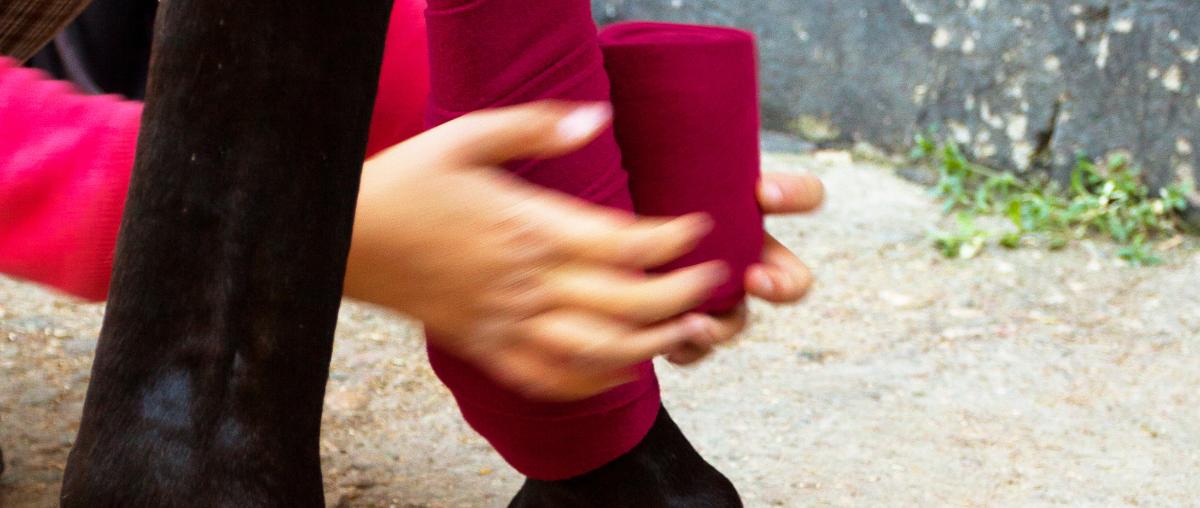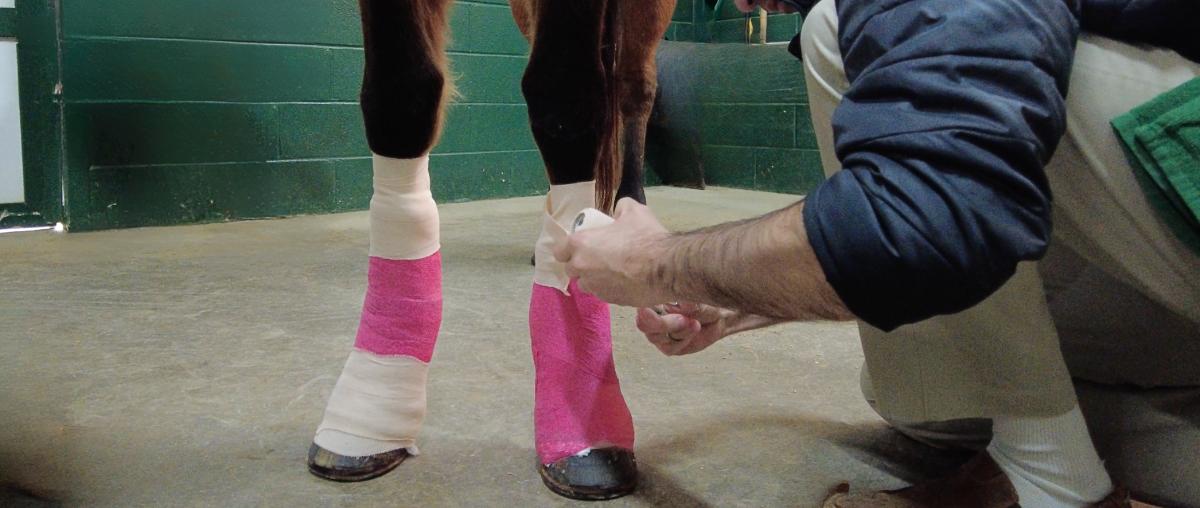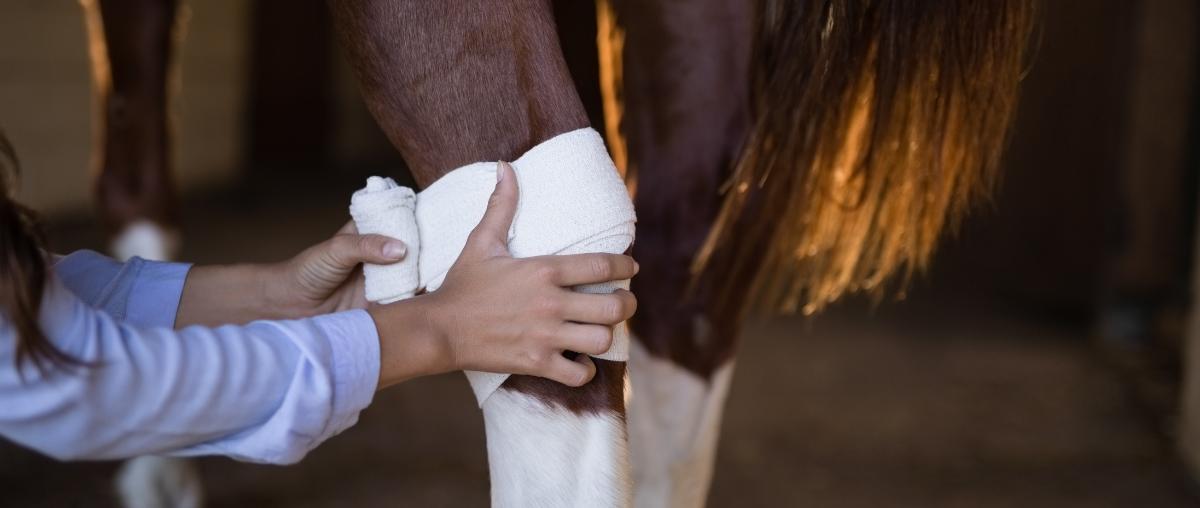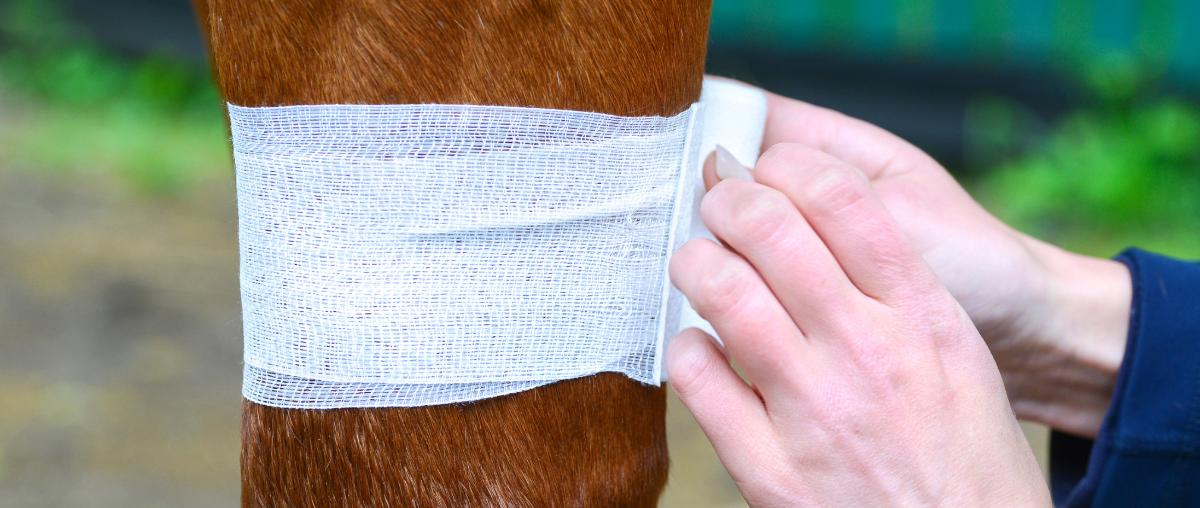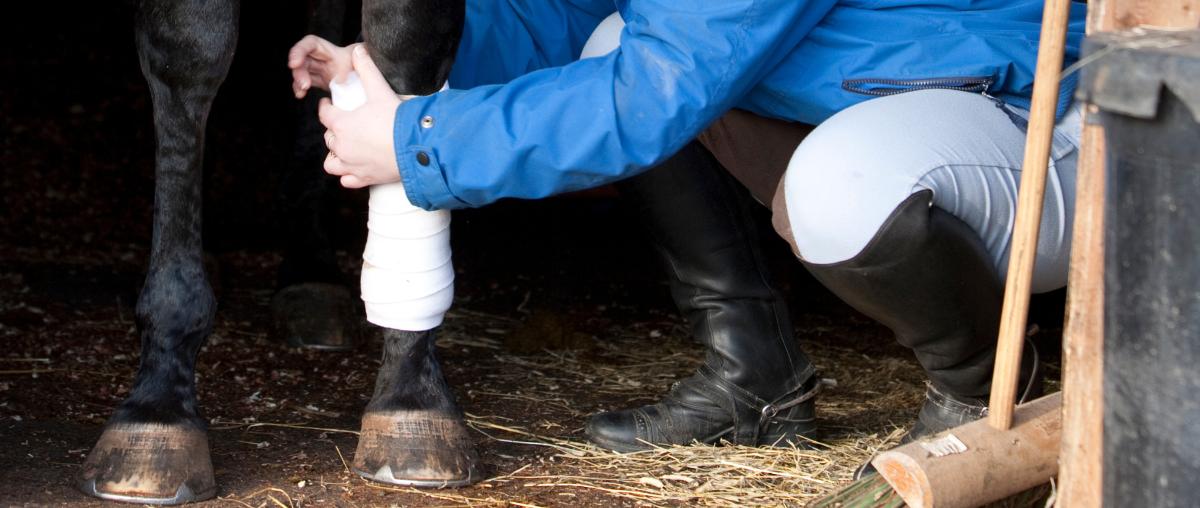DAVIE COUNTY LARGE ANIMAL HOSPITAL
Applying Sweat Bandages in Horses
- posted: Jun. 02, 2023
When your horse suffers a sprain or traumatic injury, or is stall-bound for extended periods, its legs may swell and become warm to the touch. Because inflammation and swelling can damage tissues and cause discomfort, your veterinarian may prescribe a “sweat” bandage as an aid in reducing fluid build-up in the legs. Read More
Applying Pressure Bandages in Horses
- posted: Jun. 02, 2023
When a horse sustains a serious leg injury, it is sometimes necessary to stabilize the limb and control bleeding and swelling until your veterinarian arrives. A pressure bandage is an effective first aid tool that can be used to accomplish this task. Read More
Applying Hock Bandages in Horses
- posted: Jun. 02, 2023
A horse uses its hocks in nearly everything it does – from stopping and standing to walking and galloping. Constant use and a prominently exposed point makehocks vulnerable to stress, fatigue and traumatic injury. Read More
Applying A Knee Bandage to Your Horse
- posted: Jun. 02, 2023
This article provides comprehensive guidelines for the proper application of knee bandages in horses. It emphasizes the importance of understanding the correct technique to ensure that the bandage serves its intended purpose without causing harm to the horse. The article highlights the various ways knee bandages can help, such as reducing swelling, providing support for weak joints, limiting motion in the joint, and protecting wounds or surgical sites. Read More
Applying A Hoof and Lower Leg Bandage to Your Horse
- posted: May 11, 2023
Hoof bandages may be used to: protect wounds, cracks, abscesses or surgical sites from contamination or trauma. Read More
Location
Davie County Large Animal
928 Farmington Rd
Mocksville, NC 27028

